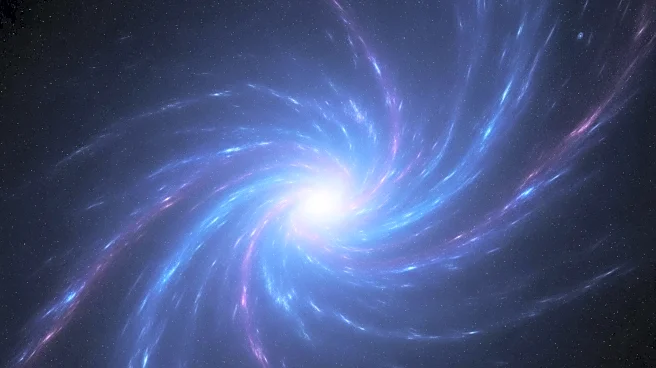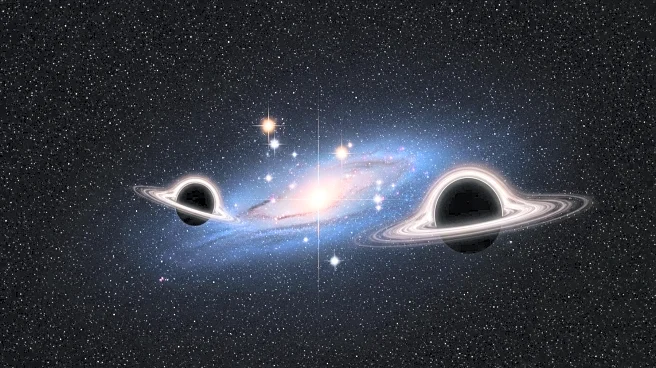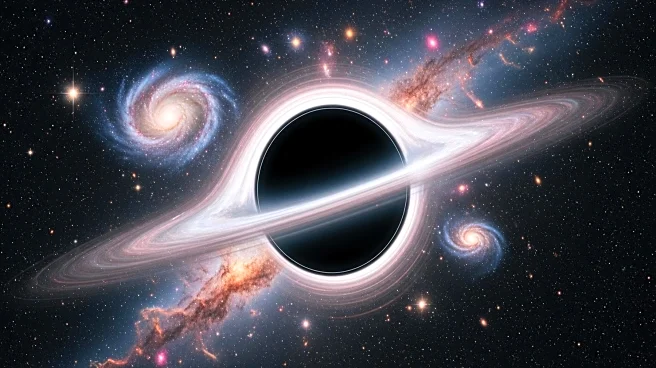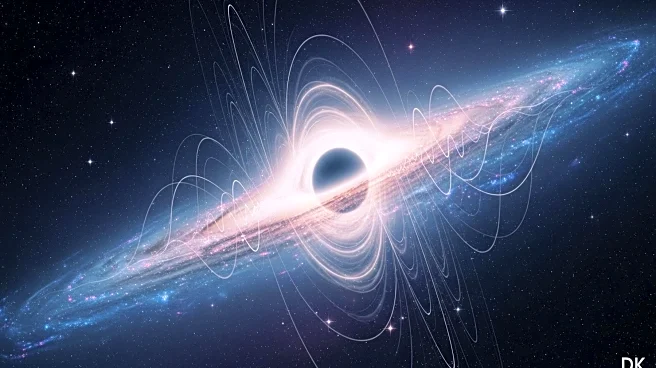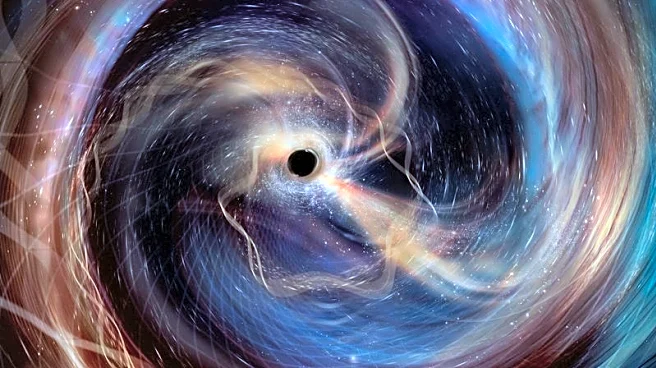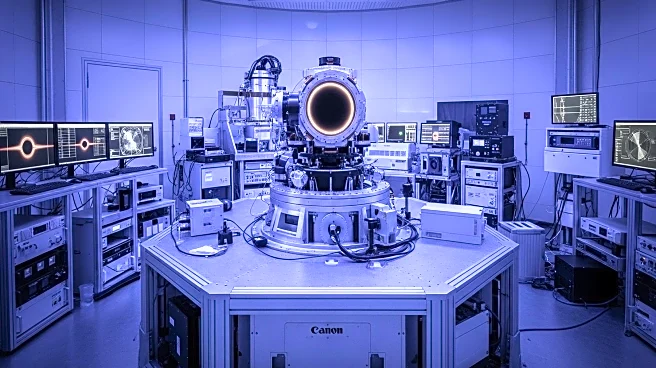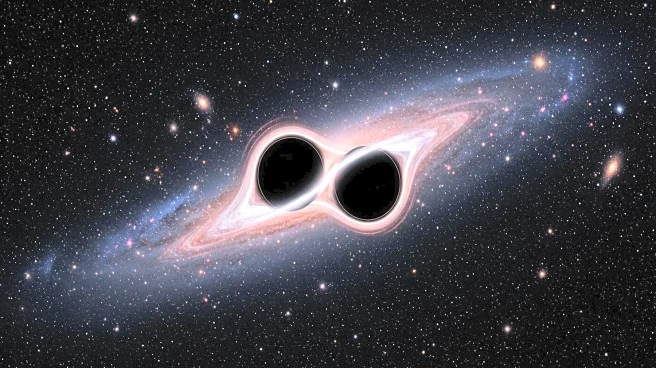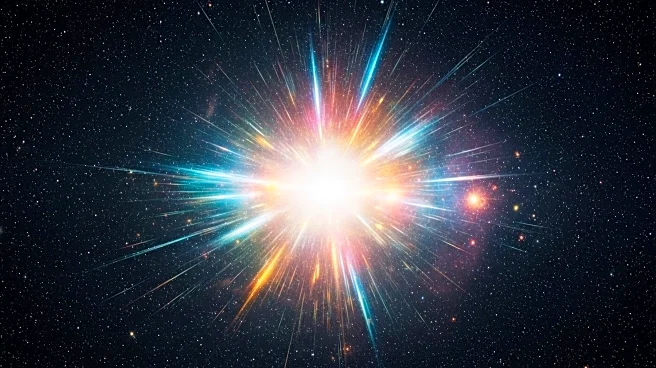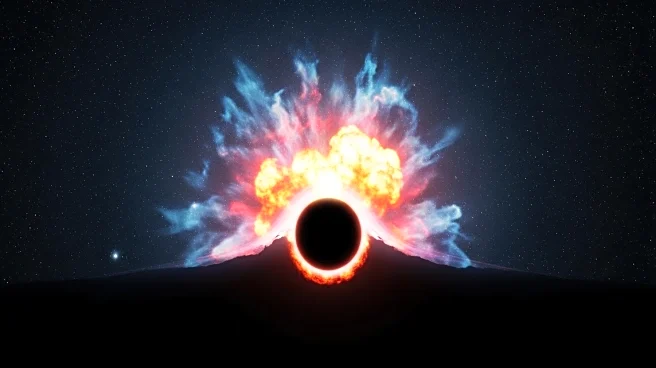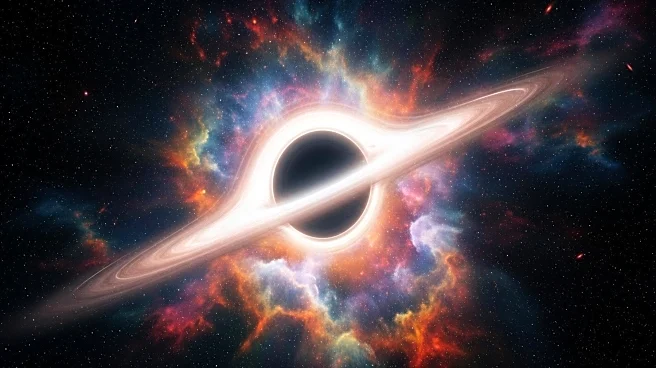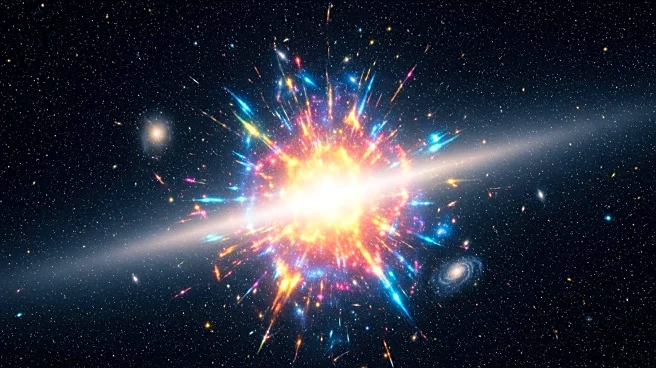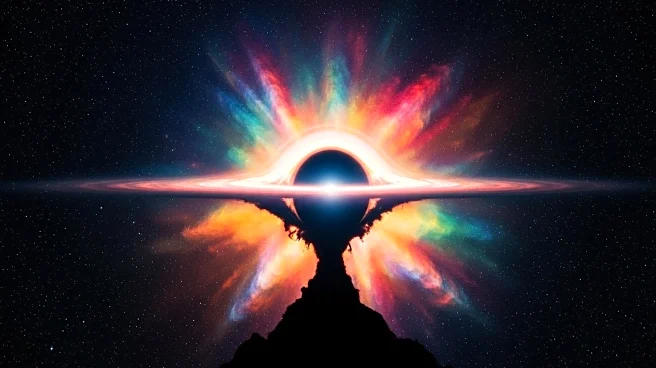What is the story about?
What's Happening?
Since the first detection of gravitational waves in 2015, scientists have gained unprecedented insights into the universe's dark objects. The LIGO, Virgo, and KAGRA collaboration recently released an updated list of gravitational wave discoveries, including the clearest observation to date. Gravitational waves provide a new perspective on the universe, allowing researchers to study phenomena that do not emit light. The collaboration's recent findings include a neutron star-black hole merger and the most massive binary black hole merger ever detected.
Why It's Important?
Gravitational wave detection has transformed astrophysics, offering a new method to study the universe's most extreme events. These observations enhance our understanding of black holes, neutron stars, and the fundamental laws of physics. The ability to detect gravitational waves with increasing precision opens new avenues for research, potentially leading to discoveries about the universe's origins and the nature of dark matter. The collaboration's ongoing efforts contribute to the advancement of gravitational wave astronomy and its role in exploring cosmic phenomena.
What's Next?
The LIGO, Virgo, and KAGRA collaboration's fourth observing run will continue through November, with expectations of over 100 additional discoveries. Future upgrades to LIGO and the development of new observatories, such as Cosmic Explorer and the Einstein Telescope, will further increase the detection rate and precision of gravitational wave observations. These advancements will enable researchers to explore the earliest black hole mergers and other cosmic events, expanding our knowledge of the universe.
AI Generated Content
Do you find this article useful?
